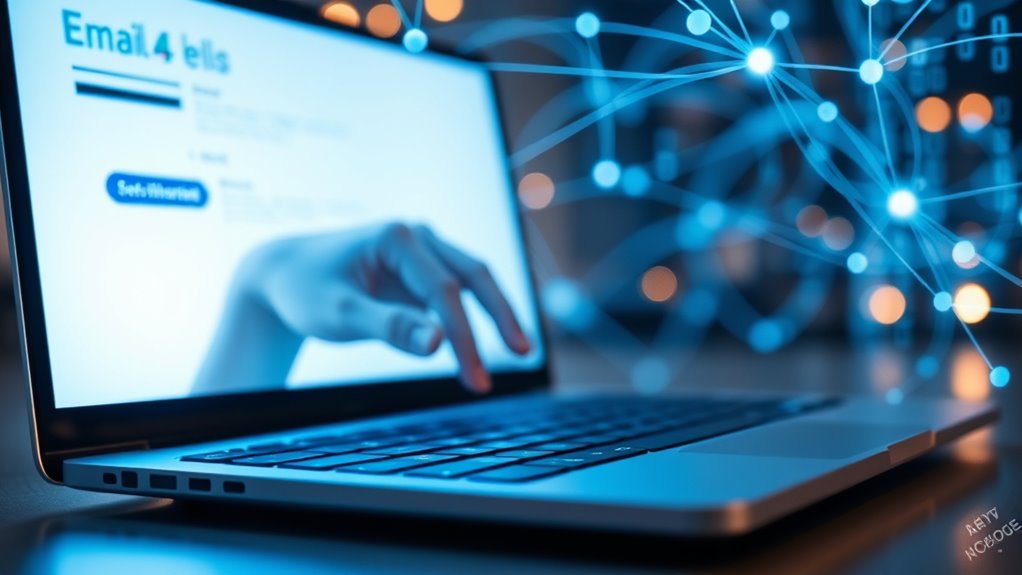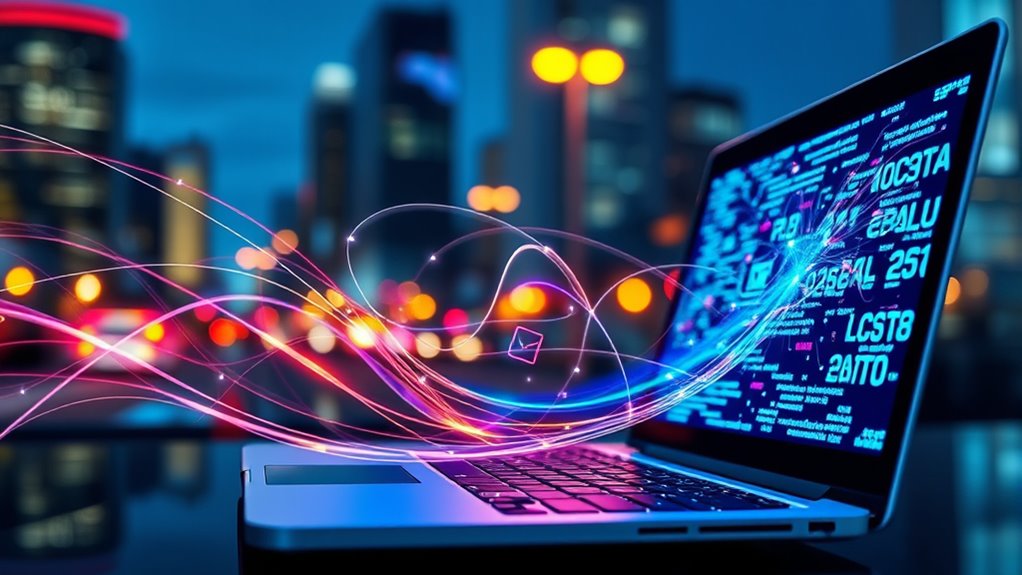Email works through a complex process that starts when you hit “send.” Your email client uses SMTP to transmit the message, bouncing it across multiple servers. During this journey, spam filters may flag your email if it contains certain keywords. Once it reaches the recipient’s server, protocols like IMAP or POP3 retrieve it for viewing. Understanding how these pieces fit together helps guarantee your emails land in the right inboxes. There’s plenty more to uncover about this fascinating process.
Key Takeaways
- Email transmission begins with the email client using SMTP to send messages from a user’s device to the server.
- Emails travel through multiple servers and may encounter spam filters that assess their legitimacy during transit.
- Upon reaching the recipient’s server, emails are stored until accessed via retrieval protocols like IMAP or POP3.
- Spam filters help prevent unwanted emails from reaching inboxes, but important messages can be mistakenly flagged.
- Understanding the email sending process and maintaining good etiquette enhance message deliverability and improve communication.

Email, while seemingly straightforward, involves a complex process that happens in the blink of an eye. When you hit “send” after composing your message, your email client first interacts with specific email protocols. These protocols, like SMTP (Simple Mail Transfer Protocol), are the rules that govern how your email gets sent from your device to the recipient’s server. As you can imagine, this is a pivotal step. Without the right protocols, your message wouldn’t have a clear path to travel.
Once your email is sent, it travels across the internet, bouncing between various servers until it reaches its destination. This journey is swift, and you might not even realize just how many stops your email makes. As it travels, the email might encounter spam filtering systems set up by the recipient’s email provider. These filters work tirelessly to distinguish between legitimate messages and potential spam. You wouldn’t want your important email to end up in the junk folder, would you?
As your email zips across the internet, it navigates various servers and faces spam filters, ensuring it doesn’t get lost in the junk folder.
When your email reaches the recipient’s server, it’s ready for retrieval. The server stores your message until the recipient checks their inbox. Here’s where another set of protocols comes into play—IMAP (Internet Message Access Protocol) or POP3 (Post Office Protocol). These protocols help retrieve your email and display it in the recipient’s inbox. If they’re using IMAP, they can access their email from multiple devices, which is becoming increasingly common.
Now, the recipient opens their inbox, and if everything goes well, your email appears in their list of messages. However, if your email contained certain keywords or characteristics that the spam filters flagged, it might end up in the spam or junk folder. This is where email etiquette comes into play. Avoiding excessive links or suspicious language can help guarantee your emails don’t get caught in that web of filtering.
You might think it’s just a simple click of a button, but sending an email is a symphony of processes working in harmony. Every step, from protocols to the potential pitfalls of spam filtering, plays an essential role in guaranteeing your message reaches its intended recipient. Additionally, maintaining a clean email list through regular maintenance can significantly enhance your deliverability rates. So next time you hit send, remember the intricate dance of technology that guarantees your words travel across the digital landscape, connecting you with someone on the other side of the world.
Frequently Asked Questions
What Email Providers Are the Most Secure?
When it comes to secure email providers, ProtonMail and Tutanota stand out. They use strong encryption protocols, ensuring your messages stay private. Both services prioritize user privacy with transparent privacy policies, protecting your data from third-party access. Another good option is Mailfence, which also offers robust encryption and a commitment to user confidentiality. By choosing any of these providers, you can feel confident that your communication remains safe and secure.
Can I Send Large Files via Email?
You can send large files via email, but there are file size limits you need to evaluate. Most email providers cap attachments around 25MB, which can be restrictive. However, you can bypass this by using cloud services for larger files. Just upload your document, share the link, and let your recipient access it. Remember, common attachment types like PDFs and images are usually safe bets, but always check those limits first!
How Do I Recover a Hacked Email Account?
To recover a hacked email account, start with password recovery options provided by your email service. Use any recovery email or phone number linked to your account. Once you regain access, change your password immediately to enhance account security. Enable two-factor authentication for extra protection. Regularly review your account settings and recent activity to guarantee no unauthorized changes have been made. Staying vigilant is key to preventing future hacks.
What Are Common Email Etiquette Tips?
To maintain good email etiquette, guarantee your email tone is professional and respectful. Avoid using all caps, as it can come off as shouting. When replying, consider your reply timing; respond promptly, ideally within 24 hours, to show respect for the other person’s time. Use clear subject lines, keep your message concise, and always proofread before hitting send. These simple practices can enhance communication and strengthen relationships.
How Can I Unsubscribe From Unwanted Emails?
Think of your inbox like a garden; you want to nurture the blooms and pull out the weeds. To unsubscribe from unwanted emails, look for the “unsubscribe” link usually found at the bottom of the message. If that doesn’t work, set up email filters to automatically sort out spam. By actively managing your inbox, you can cultivate a cleaner, more enjoyable email experience, just like tending to your favorite flowers.
Conclusion
In conclusion, email is a remarkable tool that connects us instantly, transcending distance and time. Did you know that over 300 billion emails are sent every day? That’s more than 3.5 million emails every second! This staggering number highlights how essential email is in our daily lives, allowing us to communicate, share ideas, and stay in touch with loved ones. So, the next time you hit send, remember you’re part of an incredible global conversation!










